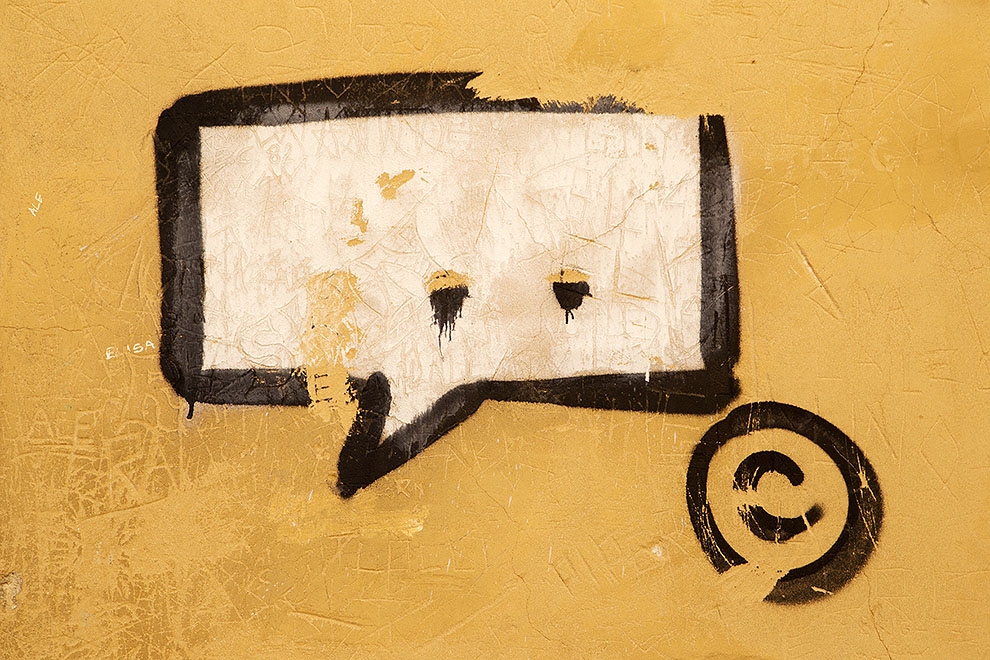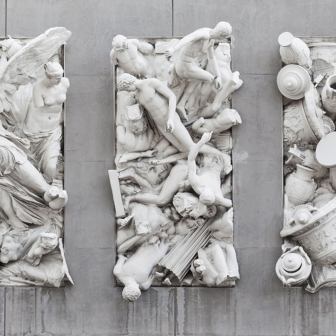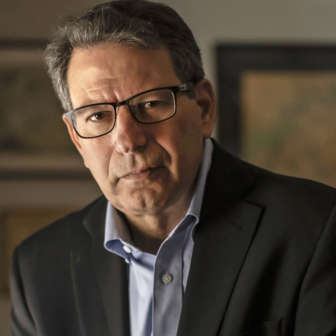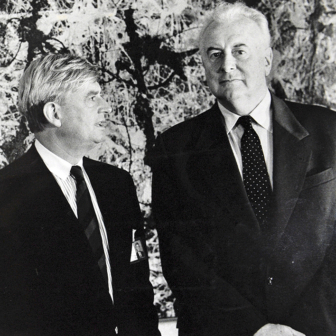Does copyright help creators when they’re making work, like it does once they’re collecting on it? In Australia, the answer is: sometimes.
Chris Wallace wrote a biography of Germaine Greer in spite of the fact that Greer refused permission to quote even from her published work. Wallace used exceptions written into Australian copyright law to go ahead anyway. But other Australian creators haven’t found a way to create under one of the world’s most restrictive copyright regimes.
Here are comments from interviews we’ve recently conducted in an ongoing study at Queensland University of Technology:
I’ll never make another music doco – too painful. And we’ll lose our Australian music heritage if we can’t tell those stories.
I had to take out of my novel song lyrics and references to popular culture, so it’s less vivid and specific.
Here at the gallery we’re curating amazingly innovative work, but we don’t dare show what we’re doing online to a much wider audience – and the one it was made for.
The choir in our bush community gets together every year to sing Christmas carols, and it’s a great community story. But the film we made about it can’t be distributed. Who knew so many Christmas carols were copyright by American companies?
The common denominator: licensing problems, from high prices to outright refusal to a deadly silence. This is a genuine and well-known cost of copyright monopoly, one that prevents new work from being generated, from collecting revenue and royalties, and from contributing to Australian culture. It results from copyright law that narrowly restricts unlicensed access.
To deal with this known problem, other Commonwealth countries have more flexible “fair dealing” rules, and one popular option in Asia is the more general option of “fair use.” Yet the voice of creators trying to make new work within Australia’s copyright framework has not yet surfaced in the current highly polarised, relentlessly politicised debate. As my recent published research with Dorian Hunter Davis on the inquiry process showed, there’s a big hole in discussion of Australia’s copyright reform.
Over twenty years and seven inquiries, Australian government agencies have found Australian copyright law outdated and unready for the digital era. Inquiry after inquiry has falsely pitted technological innovation and consumers against creators – and stalled the debate. Our research found this pattern repeated in the last two inquiries.
Why is that a false opposition? Because almost everyone these days is both a consumer and a creator. So the real problem isn’t which side you’re on; it’s about the costs and benefits to creative production of different approaches. Does today’s copyright law promote Australian culture, or hinder it? Would policy that permits more (though still controlled) access to existing material help or hurt Australian culture?
Right now, we simply don’t know. The actual creator of new culture, talking about the creative process, was strikingly absent in all those government inquiries. Almost no creator, except academics, even spoke about the process of making work.
Policy-makers need to know about the creative process, and it’s not their fault that they’re not hearing it. It’s hard to come by. Film-makers, choreographers, playwrights, designers, visual artists and musicians may be too busy making their work to focus on policy. Remixers, samplers and digital storytellers are unrepresented. Creatives’ collecting societies – the organisations that collect royalties and fees on artists’ behalf – aren’t interested in creative process; they’re interested in collecting licensing fees, and they relentlessly cultivate the creatives’ guilds. Publishers guard their archives zealously. The Motion Picture Association of America doesn’t want anyone to get the idea they can copy any part of American movies.
In the copyright debate, all these interest groups speak as if they represent creators’ interests in all areas. And they all act as if new creators don’t face costs from long, strong copyright laws that keep existing culture off-limits unless the copyright holders (very rarely the actual creators) agree.
When the same issues were being debated in New Zealand, the government commissioned original, independent research on creative practices today. There, as in Australia, film-makers are forced to go to physical archives when they could be looking online. They can’t use material when its owner can’t be found. They avoid work that involves a lot of quotation because of both expense and time-limited licences. Authors spend large chunks of time hunting down copyright owners; and the evolution of ebooks has been held back. Librarians and archivists would like to digitise their collections and make them available; galleries, too, find digital innovation just out of their reach. Budding visual artists are running scared.
It’s no surprise that this side of creative experience isn’t documented by collecting societies or publishers. It’s creators who feel the pinch, and they might not even know there’s an alternative approach. Worse, their collecting societies, and the guilds that are so dependent on the collecting societies, may tell them – without any evidence – that change threatens their revenues. Since copyright exceptions (or user rights), by definition, don’t intrude on the market for the original work, this claim would really need some very strong evidence to be plausible. But creators don’t know that; they’re not copyright experts and they shouldn’t have to be.
So independent research that provides reliable information on current practice is a valuable tool for policy-makers and stakeholders alike. At QUT, with the help of a Fulbright senior fellowship I benefit from, we are running a survey to explore the implications of copyright for creative practice in Australia.
Australians may eventually decide that fair dealing, as currently designed, is suitable for Australia’s economy and culture. They may decide, as the Canadian government eventually did, to tweak fair dealing to make it far more flexible. They might, as Israel did, adopt US-style fair use. Whatever they decide, it will matter most to them. Whatever they decide will affect the quality, quantity and very nature of future Australian culture, so it’s worth hearing from the actual creatives. •




